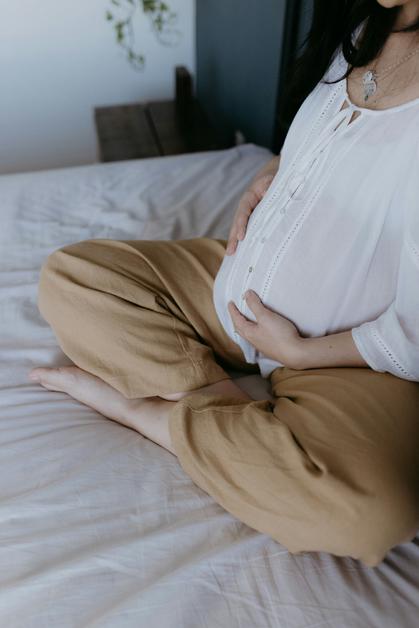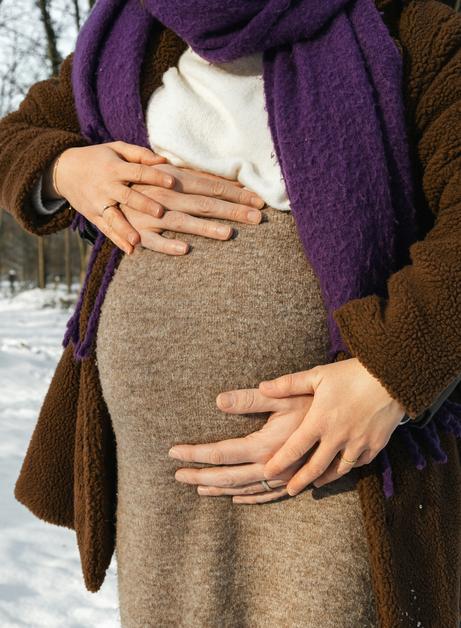Pregnancy shapes the body in extraordinary ways, but not all the changes are welcome. Hip pain during pregnancy—does that road sound familiar? Perhaps you’ve woken in the night to a sharp pull deep in your hip, or found it strangely difficult simply to rise from the sofa. Maybe walking down the hallway morphs from an effortless task into a measured, careful process, and trying to find a comfortable sleeping position becomes an exercise in patience. Every parent anticipates physical changes, but the persistent, sometimes baffling pain radiating from the hips is so often unexpected. What really causes it? Is it just the extra weight, or does something deeper influence your comfort and mobility? Most importantly, can you prevent it, or at least ease the ache without worry for your baby’s well-being? Here, discover medical explanations with clear answers, practical advice, a touch of empathy, and concrete guidance, so your journey through pregnancy (with all its surprises) feels just a little lighter.
Why does hip pain during pregnancy happen? A complex dance of hormones, biomechanics, and daily life
Imagine the pelvis as a shifting stage—every week, hormones blend and bones subtly reorient in preparation for the main event: childbirth. The hormone relaxin acts as the main conductor, intentionally softening and loosening the ligaments that steady your pelvis. While this process is entirely natural, it unwittingly opens a door to instability and, yes, hip pain during pregnancy. What else is at play?
Weight steadily accumulates, and with it comes increased pressure on the hips and supporting muscles. The posture shifts—shoulders back, belly forward—a new, uneven equilibrium emerges. This “compensation” places additional strain on the pelvic girdle, the network of bones and joints anchoring the hips to the spine and thighs. For some, pelvic joint dysfunction is immediate and intense; for others, symptoms build slowly, almost imperceptibly, until daily life—walking, standing, even turning in bed—demands new strategies.
First pregnancy? Higher body mass index? Perhaps a job requiring long periods on your feet or mostly seated? These factors subtly adjust risk, quietly setting the stage for discomfort. Of course, previous injuries or a history of pelvic pain raise the stakes, but even those with no background in musculoskeletal issues may suddenly find themselves stretching, shifting, and sighing through hip discomfort.
Understanding causes and triggers: Round ligaments, the pelvic girdle, and more
Look closer at the mechanics and consider the anatomical structures called into action as pregnancy evolves:
- Round ligament pain can feel like a radiating, sharp shock. These ligaments support the uterus and stretch dramatically as the belly grows. The result? Sudden or stabbing pain, often with movement.
- Pelvic girdle pain, sometimes labeled symphysis pubis dysfunction, arises when the joints at the front and back of the pelvis become overly mobile and less synchronized. Expect aching at the pubic area, hips, or lower back—with possible feelings of instability.
- Sciatica is another frequent villain. As the womb grows, it can press against the sciatic nerve, provoking pain that shoots from the lower back down the hip and along the leg.
- Iliotibial band tension manifests as discomfort along the outer thigh or hip, a byproduct of altered walking patterns and compensatory movements.
- Muscle fatigue and nocturnal cramps become familiar companions as the body’s alignment and muscle use shift daily.
- If you’ve experienced trauma, arthritis, or nerve compression previously, these can resurface—or worsen—under the unique strains of pregnancy.
Lifestyle choices amplify the picture. Extended sitting, limiting stretching, weak pelvic floor or gluteal muscles, and repetitive poor posture all add up. Even seemingly small habits, like sitting cross-legged at a desk or slouching on the couch, can tip the balance and usher in hip pain during pregnancy.
What does hip pain during pregnancy feel like? Recognizing signs and patterns
A dull ache or a sudden jolt—sometimes it’s difficult to find a pattern amid the physical unpredictability. For most, hip pain during pregnancy appears in the second trimester, intensifying as gestation progresses and the baby demands more room. Pain might reside in both hips or focus sharply on one side; sometimes it spreads toward the lower back, buttocks, groin, or even travels down the thigh.
Be alert to:
- Sharply localized pain with twisting or sudden movements.
- Persistent aching that lingers, especially after activity.
- Pain that radiates down the leg—a possible sign of sciatic nerve involvement.
- Stiffness or a “block sensation” after prolonged sitting or upon waking.
- Numbness or tingling—markers of underlying nerve irritation.
- Instability when walking, as though the hip might give way.
Worried that these sensations might indicate labor or something severe? True labor brings rhythmic contractions, not just hip discomfort. Yet, if pain severely impairs daily activities or comes with fever, redness, swelling, or sudden weakness, do reach out to a healthcare provider.
Risk factors: who is most likely to experience hip pain during pregnancy?
Given that up to half of all expectant parents encounter hip discomfort, why do some sail through pregnancy pain-free while others struggle? Some risk factors are modifiable, others not:
- Prior hip, pelvic, or back problems increase sensitivity.
- Joint hypermobility, whether genetic or due to repeated pregnancies, leaves joints vulnerable.
- Inactivity, poor posture, or physically demanding routines can prompt earlier or worse pain.
- Carrying twins or more? More load means more stress on pelvic tissues and joints.
- Pre-existing medical issues, from arthritis to musculoskeletal imbalance, may resurface with new vehemence.
- Less frequent movement or infrequent stretching early in pregnancy can create a cascade of tightness and discomfort.
The interplay is complex—sometimes subtle, sometimes overwhelming. But with awareness comes the first step toward reclaiming comfort.
Diagnosis: When should hip pain during pregnancy prompt seeking help?
Mild aches are, for many, a common currency of pregnancy. Still, not every twinge is benign. Call a healthcare professional if you notice:
- Pain that is severe, persistent, or worsens with rest, rather than easing.
- Difficulty standing, walking, or completing daily activities.
- Redness, warmth, or swelling over the hip or pelvis.
- Numbness, notable weakness, or sudden changes in mobility.
- Any pain associated with vaginal bleeding, fever, burning with urination, dizziness, or faintness—these are warning signals needing urgent evaluation.
Physical examination remains the starting point. When needed, ultrasound offers a safe view of joint and soft tissue, while MRI (without radiation) may clarify difficult cases after the first trimester. Distinguishing normal discomfort from conditions like deep vein thrombosis or infection is a priority—always better safe than sorry.
Strategies for relief: movement, gentle stretches, and practical home care
Is it possible to outsmart hip pain during pregnancy? Yes, often with a combination of gentle routines and adjustments:
- Piriformis stretch: Sit, cross one ankle over the opposite knee, lean forward gently—stretching deeply into the buttocks.
- Hip circles on all fours: Position yourself on hands and knees, then move hips in slow, controlled circles.
- Seated adductor stretch: Sit with legs apart, lean forward, lengthening the inner thighs.
- Strengthening routines: Try the “superwoman” pose (alternately extending arm and opposite leg while on all fours) and gentle bridge lifts (lying on your back, knees bent, pressing hips upward) to activate stabilizing muscles.
- Cat stretch: Softly arch and round the spine, easing tension and mobilizing the back.
Pair these movements with prenatal yoga, aquatic exercise, or swimming for further support. Above all, listen to discomfort—ease back if pain intensifies.
At home, parents often discover a handful of highly effective tactics:
- Heat application (using a heating pad wrapped in fabric) soothes tight or aching muscles.
- When pain feels sharp or inflamed, cold packs can limit swelling and blunt the edge of discomfort.
- Gentle massage—whether with fingertips, a small ball, or by a trained therapist—reduces local muscle contractions and releases trigger points.
- Deep abdominal breathing and relaxation techniques, including mindfulness meditation, aren’t just for stress—they tangibly lower pain perception.
Don’t underestimate the power of quality sleep for recovery. Sleep on the left side, with a pillow between the knees to keep hips and pelvis aligned. Support the growing belly with an extra cushion if needed, and opt for a firm mattress whenever possible.
Positioning and support: optimizing daily comfort
Realignment isn’t just a buzzword. Small changes make a big difference:
- Side-sleeping, especially on the left, increases circulation to the placenta and relieves the hip and lower back.
- Use a maternity pillow or firm cushion tucked between the knees to prevent pelvic rotation.
- During the day, sit upright with lumbar support and both feet well-planted. Avoid crossing legs or folding into slouched positions, which exacerbate hip strain.
- Choose proper footwear: flexible, grippy, flat or low-heeled, and stable. Say no to unsafe sandals or pointy heels.
A maternity belt offers targeted support for those who are on their feet often or who experience a sense of heaviness or slackness in the hips and pelvis.
Professional support: osteopathy, physiotherapy, and medical assistance
When home strategies fall short, professional input transforms outcomes:
- Osteopathy harnesses gentle manipulations and targeted posture correction, sometimes emphasizing relaxation of the diaphragm (yes, relaxing this respiratory muscle can influence pelvic comfort).
- Physiotherapy builds a customized pathway—focused stretching, muscle strengthening, hands-on mobilization, and expert education on ergonomic movement.
- Experiences differ: some parents swear by routine osteopathic or physiotherapy appointments to anticipate flare-ups, while others prefer consulting only when pain escalates.
Always choose practitioners experienced in pregnancy care. Their expertise tailors interventions, protects you, and keeps your baby’s safety in mind.
Managing and relieving hip pain during pregnancy: medical and holistic tools
Reliance on medication is best kept minimal and preferably under professional guidance. Acetaminophen (paracetamol) is considered safest for pain relief, but always ask your care provider first. Avoid non-steroidal anti-inflammatory drugs (NSAIDs) during pregnancy unless specifically instructed.
Beyond this, maternity belts, ergonomic cushions, pregnancy pillows, and water-based therapies round out the toolkit. Prenatal massage (always provided by a certified professional) and osteopathic treatment, adapted to pregnancy, add further value. Don’t overlook foundational strategies: careful posture, regular movement, and robust footwear.
Aquatic therapy (gentle exercise in a warm pool) harnesses both the soothing power of water and the benefits of resistance for gentle, pain-free strengthening.
Exercise, physical therapy, and prenatal yoga: movement as medicine
Why does gentle activity matter so much? Regular, targeted movement for the hips, pelvic floor, core muscles, and lower back maintains joint stability, prevents muscle imbalances, and limits abrupt postural shifts. Prenatal yoga structures these movements, combining flexibility training with mindful breathing and relaxation.
Physical therapy delivers a personalized assessment—building exercises that fit your symptoms, stage of pregnancy, and physical history. For those who crave soothing warmth, aquatic movement remains a unique pleasure: buoyancy relieves pressure, resistance tones gently, and the water cocoons sore joints in comfort.
Sleeping well with hip pain during pregnancy
Nighttime comfort often feels like a distant dream, but a few focused steps help:
- Side-lying, left side preferred: aids blood flow, keeps organs and hips aligned.
- Position a pillow or specialized pregnancy cushion between knees, under the belly, or behind the back—tweak as night progresses.
- A firm mattress offers essential lumbar and hip support.
- Try gentle stretching or a warm (not hot) bath before bed.
- Shift pillow support or position if woken by pain—listen to what your body requests in the moment.
- Continuing sleep trouble? Severe or disabling pain? Please consult your healthcare professional—a good night’s sleep aids both recovery and parenting stamina.
What if hip pain during pregnancy persists? Postpartum considerations and complications
Ignored, hip pain during pregnancy can curtail mobility, limit independence, and—for some—raise the risk of falls. Labor may become more challenging if pelvic pain is severe or unaddressed. The encouraging news: for most, pain recedes gradually after birth as hormonal levels normalize and the pelvic ligaments recover their usual tautness.
Should discomfort linger postpartum, early support is best. Physiotherapy and regular, tailored activity gradually restore comfort and daily function—vital when caring for a newborn.
Prevention strategies: reducing the risk of hip pain during pregnancy
Prevention is not always possible, but adopting healthy habits shifts the odds:
- Alternate between standing and sitting—escort stiffness out the door.
- Embrace regular, short walks or gentle stretching breaks.
- Always sit with feet flat, back supported, and posture upright.
- When lifting, bend knees, avoid twisting, and keep back aligned to protect joints.
- Wear supportive, flat, and grippy shoes.
- Sleep with proper support—firm pillows or maternity cushions become invaluable.
- Aim to maintain a healthy weight, balanced activity, and regular movement throughout pregnancy.
- Pay attention to posture—at work, during rest, and while lifting your toddler or groceries.
Simple as they seem, these small changes build a foundation for comfort.
Myths and facts: separating truth from assumption
Parents often hear wild speculation about hip pain during pregnancy. Let’s address some pervasive ideas:
- It’s not just the baby’s weight—the interplay of hormones and posture matters immensely.
- There’s no link between hip pain and labor complications; the two are not partnered in destiny.
- Resting completely is counterproductive; gentle, controlled movement boosts relief.
- Hip pain rarely stems from joint disease; most cases tie back to natural, predictable bodily changes.
- Anyone can develop it, regardless of personal or family history—and relief is readily accessible, often without medication.
Key Takeaways
- Hip pain during pregnancy happens frequently, driven by natural hormonal and physical changes.
- Prioritizing alignment, posture, and gentle stretching—as well as supportive sleep positioning—transforms comfort.
- Targeted exercise, prenatal yoga, and professional guidance from physiotherapists or osteopaths make measurable difference.
- Seek help immediately for severe, persistent, or worrying symptoms—specialists can clarify and intervene safely.
- Most pregnancy-related hip pain fades after birth, but ongoing discomfort deserves thorough attention.
- Remember, resources abound and support is available every step of the way. For personalized guidance and free health questionnaires for your child, download the Heloa app.
Facing hip pain during pregnancy is daunting, but with accurate knowledge, a proactive approach, and caring professionals at your side, comfort and resilience are within reach.
Questions Parents Ask
Can hip pain during pregnancy be a sign of something serious?
It’s understandable to feel worried when hip pain appears suddenly or feels intense. In most cases, hip pain during pregnancy is related to natural changes in your body and isn’t dangerous. However, if you notice severe pain, swelling, fever, redness, difficulty moving your leg, or symptoms like tingling or numbness, it is important to speak with your healthcare professional. These may sometimes indicate an underlying condition that needs specific attention. Trust your instincts—seeking advice can bring reassurance and, if needed, quick solutions.
How long does hip pain last during pregnancy?
Many parents find that hip discomfort appears in the second or third trimester and may vary in intensity from day to day. For some, it disappears soon after giving birth as the body’s hormones stabilize and muscles recover. For others, a shorter period of discomfort may linger postpartum, especially if the pain was intense during pregnancy. With rest, gentle movement, and a little time, relief often arrives naturally. Remember, if pain persists after delivery, there are professionals ready to help you regain full comfort.
Are there sleeping positions that help reduce hip pain during pregnancy?
Finding a cozy sleeping position can be challenging. Many expectant parents feel more comfortable lying on their left side, which also promotes good blood flow. Placing a pillow between your knees, under your belly, or behind your back can help keep your hips and pelvis supported and aligned. A firm mattress can add extra support, making it easier to rest peacefully. Experiment with pillow placement to discover what feels most comforting to you, and adjust as needed throughout the night.










